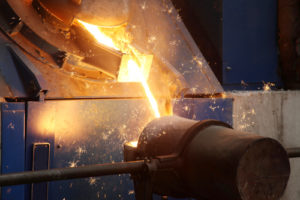
Surface Finishing Methods
Chrome plating is a surface finishing technique, which makes use of an electrolytic bath of chromium for that. Below are three chroming processes used to improve the surface finish of a metal component, even if that is a casting made up of different components.
Hard Chrome Plating
This process involves the use of heavy chromium coatings to offer a wear resistance, lubricity, and oil retention. It is not a decorative surface treatment process but is utilized to improve the durability of components such as thread molds and guides, piston rings, and so forth.
It gets the name from the measurable thickness of parts on which chromium is plated, which often is steel substrates ideally. While it is shiny and metallic, the surface improved using hard chrome plating is not technically a finishing that can be termed as decorative but durable.
Nickel Chrome Plating
Even the die cast aluminum parts can be made decorative and corrosion resistant by electroplating a layer of nickel and chrome on top of the surface. Technically, nickel is electroplated prior to applying a chrome layer on the surface of a metal part. Even a copper layer might also be electroplated on the surface before applying a layer of nickel. The nickel plating contributes to reflectivity, corrosion resistance, and a smooth finish.
On the other hand, chrome layer applied on top of that is extremely thin and adds to the decorativeness given by nickel layer underneath. The layer of chrome helps protect tarnish and scratches, and adds to the component’s corrosion resistance. However, the surface finish can be made decorative, rust-resistant, and reflective, only if nickel layer is electroplated prior to chrome.
Spray Chrome as an Alternative
Spray chrome process involves the spraying of chemicals in several layers to a metal part to make it appear as if it is coated with silver, and thereby provide a deeper shine. One can spray chrome on the metal items found in the garage with a hand tool alongside one spray gun.
This can be an alternative surface finishing method. It can give the sheen of a finish provided by chrome layer, and make the metal surface resistant to corrosion, tarnish, and scratch. The coatings provided by spray chrome are thicker, and the process does not utilize hazardous chemicals or even heavy metals as that used in traditional chrome plating processes.
